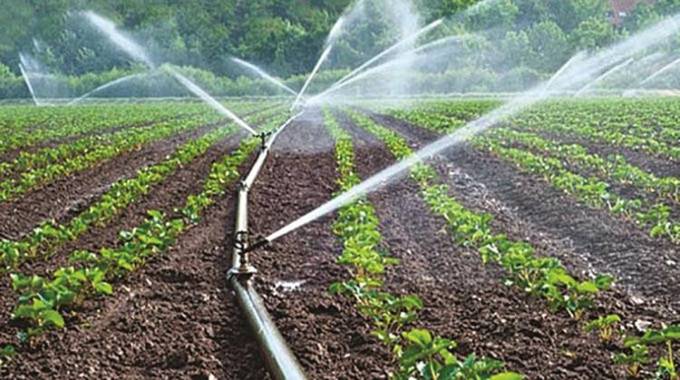
Obert Chifamba Agric- Insight
BARELY a week after most parts of the country received heavy downpours, some crops were already showing signs of moisture stress.
And it looked like it was back to square one for the affected farmers.
You ask them to comment on what was happening, and they would brazenly tell you that if they had irrigation infrastructure, they would nurse their crops through the dry spell.
The crux of the matter here is that they cannot afford that option, but they still needed to act to at least salvage something.
It is unfortunate that year-in, year-out, some farmers, especially in the country’s dry regions, have to helplessly watch their crops wilt and dry under the scorching sun even when they had been showing signs of promise, yet in some cases they are a stone’s throw away from a big water body or reservoir.
The case of villagers around Siya and Bindamombe dams in Zaka and Chivi districts of Masvingo Province, respectively, who experience crop failure and food insecurity perennially despite being situated very close to the dams, easily comes to mind.
They are so near to the water, yet the water has remained out of their reach.
These villagers may need to audit the farming methods they are using, and try out numerous conservation agriculture techniques being preached daily in the wake of climate change challenges that are affecting agriculture.
Conservation farming methods can mitigate the effects of hostile weather in areas where they have been adopted.
Farmers using them might not score yields exceeding their projections, but they have in most cases managed decent harvests to see them to the next season, and not entirely rely on Government aid, as some have come to do.
The road to decent yields starts with efforts to improve the water retention capacity of the soil surface by enhancing porosity.
The infiltration capacity of any soil is best maintained by first protecting it from the disruptive action of raindrops through a protective cover, usually of residue from the previous crop, a cover crop or mulch, and by ensuring that the soil is not disturbed by tillage.
Where farmers cannot apply the whole concept immediately, improvements in soil moisture status can still be achieved through other measures aimed at prolonging the useful life of rain water.
These include the use of surface residue covers alone, fallow periods under cover crops or natural vegetation, protection or temporary closure of grazing lands and forests from overgrazing, and operations on the contour, complemented by physical measures to detain rain water.
This practice requires farmers to use the limited amount of rainfall available as efficiently as possible.
One way to do this is to use surface run-off (water harvesting), while the other is to encourage infiltration and storage of rainwater (soil moisture retention or conservation) usually through potholing.
The advantages of using water harvesting and moisture retention techniques are that they enable the farmer to make higher amounts of water available to crops, which leads to a greater reliability and a higher level of yields.
Additionally, water harvesting can see crops through an otherwise damaging dry spell and make crop production possible where none is viable under existing conditions.
Most water harvesting techniques make use of large water sources such as rivers and ground water, for instance, wells and irrigation systems and require large-scale investment.
But in many circumstances, simple methods have been developed to collect surface run-off for productive use.
Instead of run-off being left to cause erosion, it is harvested and utilised.
Water harvesting in its broadest sense can be defined as the collection of run-off for later productive use.
Run-off may be collected from roofs and ground surfaces, as well as from seasonal streams, which is aptly termed flood water harvesting. These techniques can be adopted by individual small-scale farmers or as groups to reduce strain.
In this case, a certain amount of land, the catchment area, is deliberately left uncultivated and rainwater is allowed to run off this area to the zone where crops are grown.
The run-off is trapped in the cultivated area using barricades that allow the water to infiltrate into the soil and become available to the plant roots.
From time immemorial, contour ridges (small earthen ridges, 15cm to 20cm high, with an upslope furrow, which accommodate run-off from a catchment strip between the ridges) have been used with resounding success though the practice has in recent years been slowly dying out.
The catchment strip is usually uncultivated, but where contour ridging is used to control erosion rather than for water harvesting, the whole area may be cultivated.
Ridges may be from 1,5 to 10 metres apart, but as this is a micro-catchment system and the catchment is a function of the distance between ridges. The precise distance should be calculated for the expected rainfall of the region.
Small earthen ties are made within the furrows at four to five-metre intervals to prevent lateral flow with the objective of collecting local run-off and storing it within the soil profile in the vicinity of the plant roots. Under the practice, crops are planted on the ridges, as well as in the furrows.
Countries like Kenya, Niger, Zimbabwe, among others, have embraced the practice with impressive results.
Although the culture does not seem to be getting spontaneous acceptance, it has mainly been promoted through projects and Government policy.
Tied ridges are widely used in commercial farming situations as a means of controlling soil erosion.
Farmers can also help their cause by doing winter ploughing to ensure residue from harvested crops is turned into the soil where it helps build a good crumb structure that allows the soil to trap moisture and store it for longer periods.
